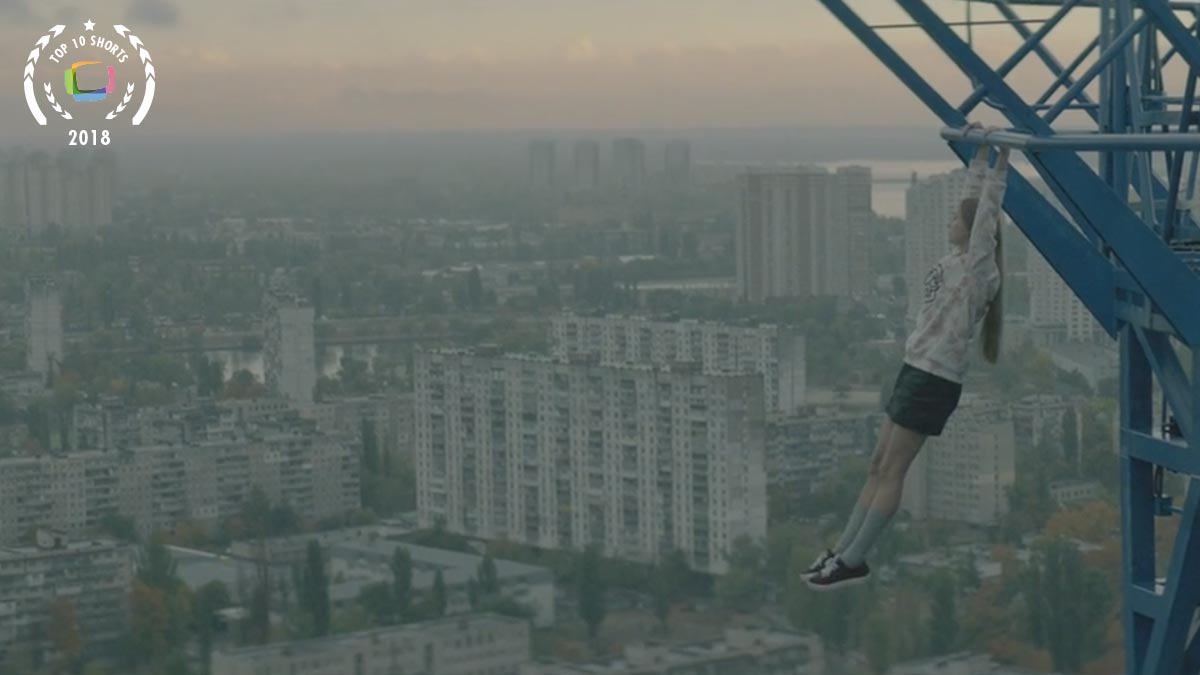A Hollywood star hits his breaking point during a press junket interview when a young journalist investigates a scandal
In ‘No Comment’, a Hollywood action star reaches his breaking point during a press junket interview when a young journalist investigates his complicity in a scandal. Over a stoic, real-time interview, ‘No Comment’ taps into the anxious headspace of Robert Grainger. As Abigail grills Robert about his relationship with a notorious director, the interview spirals. Instead of walking out on Abigail, Robert’s self-defense becomes as loud as her intensity. He’s pushed down his conscience; Abigail has come to pull the truth out of him. Directed by Russell Goldman, the film deliberates tensions and gives us a unique focus on a famed actor’s complicity. More than anything, the story put us right in Robert’s shoes as his wrongfulness gets the better of him. For Russell, creating this delicate story was not easy. But his personal experiences in the industry lead ask himself important questions – which he thought was important to be shared.
What and Who is “No Comment” for? Could you speak to the message of the film?
When the #MeToo movement began, former colleagues of guilty men started speaking publicly about assailants whose behavior they’d spent decades looking the other way from. The stories from these enablers compelled me to stare at the mirror and made me question my own relationship to complicity—have I ever looked the other way? Have I faced an opportunity to do something and fail? I created “No Comment” as a character study of a man who embodies an extreme form of this denial—someone who believes he bore witness to an assault and suffers because he chose the wrong response. What happens to this figure if someone threatens to expose this response on the largest platform imaginable? Would he confess first? I thought a short film served this idea best: we would never leave the studio, we would never jump in time, we would be left in suspense at what the hell could happen next.
There are enlightening, crucial stories made by female filmmakers like “The Tale” and “Never Rarely Sometimes Always” that address sexual assault. I could never attempt to occupy their perspectives as a storyteller. Instead, I believe if men want to tell stories about a system of hate against women, they must unflinchingly ask why men enable each other’s abusive behavior. In stories of assault the perspective of the bystander shouldn’t necessarily be avoided, particularly if male storytellers are telling it—it should be questioned and exposed for the scared, callous behavior it is.
What were the challenges you faced in telling this story?
The biggest risk in crafting ‘No Comment’ was setting it within Robert’s perspective. This choice meant asking the viewer to empathize with his POV. Which meant presenting the story’s moral compass— a journalist bent on establishing responsibility—as an antagonist. Yet this approach was crucial towards placing the viewer within Robert’s suppressive state of mind. To feel his A-list smile crack under scrutiny, feel Abigail’s questions feed his own hallucinations. By the time his confusion boils to anger, they start questioning their allegiance to a man they felt close to and presumed decent.
I rehearsed with Robert Lewis-Stephenson (Robert) and Henita Telo (Abigail) for this short as one would for a feature. We all come from theater, and we knew none of the film would work if these characters didn’t feel authentic to the fatigued Hollywood media cycle they occupy, and this assault case against Robert’s director Doug (R. Scott Hoffman) that they each feel charged about. Mr. Lewis-Stephenson’s performance remains humane through the end of the film, well after we understand the gravity of Robert’s actions. His innate empathy as an actor was necessary toward complicating Robert’s character study—we didn’t want to see his explosive anger or nastiness coming.
Even after the explosion, he made these small physical choices that revealed new layers to his shame. Likewise, Ms. Telo brings a subtle and imposing quality to Abigail that’s intrinsic to the design of the film—she’s coming into his studio, his world, and needs to mask her intentions around that. There’s a great deal of nuance involved in portraying someone constantly one step ahead of their adversary, and at the same time conveying in each moment why she’s here and who she’s fighting for. I felt grateful to be able to rest the film on both of their shoulders.
Could you talk about some of the technical elements of the project?
Our crew and I were aware of the risks involved in translating a dialogue-heavy script. How do you keep a real-time interview palpably exciting? How can you transition between a grounded interview setting and the hallucinatory quality of Robert’s subjectivity with clarity and purpose? In such a monochromatic space, lighting became more important in telling our story. Our DP Matt Kleppner chose to shoot on an Arri Amira and helped define a light temperature for each scene so that as the story became more surreal the film’s look grew murkier.
The interview has a Hollywood shine to it, with bright lighting and an infinite white backdrop. Then the aftermath of Robert’s breakdown where he confronts Abigail is painted with top-heavy shadows. When Robert steps into his troubled memories, we blow up our visualization of the studio entirely and step into a blue, hazy world. It was important for us to show these lighting transitions and feel them through Robert’s perspective—we wanted to stay as close to him as possible, never becoming distant.
Robert’s confession was the most experimental sequence in the film. Lyla had been spoken about for the entire narrative, so every moment where we eventually saw her had to feel vital. The flashes of Lyla (played by Celina Bernstein) opposite Doug were juxtaposed to abstractly represent her story and pull us into Robert’s spiraling imagination as he thinks back to that fatal night. The editing was intended to mirror Robert finally addressing his inaction—Lyla first appears to him with Doug, in scattered and disturbing fragments, yet the more Robert defers blame, the editing rhythm slows until it’s simply a shot-reverse closeup between Robert and Lyla. By this moment there’s no more Doug, or even Abigail. Just a man attempting to justify a decision to the person whose life he helped ruin.




